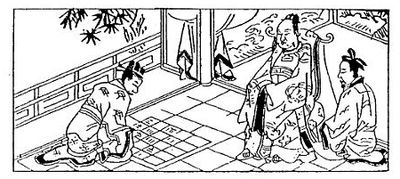Tag: Visual edit |
Tag: Visual edit |
||
| Line 2: | Line 2: | ||
Consider three resistors with different resistivity <math> R_1 </math>, <math> R_2 </math> and <math> R_3 </math>. |
Consider three resistors with different resistivity <math> R_1 </math>, <math> R_2 </math> and <math> R_3 </math>. |
||
| − | '''Part 1:''' Determine the equivalent resistance when the |
+ | '''Part 1:''' Determine the equivalent resistance when the three resistors are connected in series. |
| − | '''Part 2:''' Determine the equivalent resistance when the |
+ | '''Part 2:''' Determine the equivalent resistance when the three resistors are connected in parallel. |
[[File:CircutDiagrams.jpg|centre|thumb|295x295px]] |
[[File:CircutDiagrams.jpg|centre|thumb|295x295px]] |
||
| Line 12: | Line 12: | ||
Let <math> V </math> represents the voltage of the battery that follows Ohm's rule <math> V = I{R}_{eq} </math>. Here <math> {R}_{eq} </math> represents the equivalent resistance of the resistors. When two resistors are connected in series, the current going through each resistor is the same, and the voltage drop across each resistor is proportional to their respective resistances. By Kirchoff's loop rule, |
Let <math> V </math> represents the voltage of the battery that follows Ohm's rule <math> V = I{R}_{eq} </math>. Here <math> {R}_{eq} </math> represents the equivalent resistance of the resistors. When two resistors are connected in series, the current going through each resistor is the same, and the voltage drop across each resistor is proportional to their respective resistances. By Kirchoff's loop rule, |
||
:<math> V - {I}_{1}{R}_{1} - {I}_{2}{R}_{2} - {I}_{3}{R}_{3} = 0 </math> |
:<math> V - {I}_{1}{R}_{1} - {I}_{2}{R}_{2} - {I}_{3}{R}_{3} = 0 </math> |
||
| + | |||
:<math> V = {I}_{1}{R}_{1} + {I}_{2}{R}_{2} + {I}_{3}{R}_{3} </math> |
:<math> V = {I}_{1}{R}_{1} + {I}_{2}{R}_{2} + {I}_{3}{R}_{3} </math> |
||
| + | |||
:<math> I{R}_{eq} = {I}_{1}{R}_{1} + {I}_{2}{R}_{2} + {I}_{3}{R}_{3} </math> |
:<math> I{R}_{eq} = {I}_{1}{R}_{1} + {I}_{2}{R}_{2} + {I}_{3}{R}_{3} </math> |
||
| − | Since <math> I_1 = I_2 = I_3 = I</math>, |
+ | Since <math> I_1 = I_2 = I_3 = I </math>, |
:<math> I{R}_{eq} = I\left({R}_{1} + {R}_{2} + {R}_{3}\right) </math>. |
:<math> I{R}_{eq} = I\left({R}_{1} + {R}_{2} + {R}_{3}\right) </math>. |
||
| Line 28: | Line 30: | ||
When two resistors are connected in parallel, the voltage going through each resistor is the same, and the current the enters into the parallel branch is distributed across each resistor inversely-proportional to each resistor. By Kirchoff's junction rule, |
When two resistors are connected in parallel, the voltage going through each resistor is the same, and the current the enters into the parallel branch is distributed across each resistor inversely-proportional to each resistor. By Kirchoff's junction rule, |
||
:<math> I = I_1 + I_2 + I_3 </math> |
:<math> I = I_1 + I_2 + I_3 </math> |
||
| + | |||
:<math> \frac{V}{{R}_{eq}} = \frac{{V}_{1}}{{R}_{1}} + \frac{{V}_{2}}{{R}_{2}} + \frac{{V}_{3}}{{R}_{3}} </math> |
:<math> \frac{V}{{R}_{eq}} = \frac{{V}_{1}}{{R}_{1}} + \frac{{V}_{2}}{{R}_{2}} + \frac{{V}_{3}}{{R}_{3}} </math> |
||
| + | |||
| − | # <math> {F}_{2} = k_2 x </math> |
||
| − | + | Since <math> V_1 = V_2 = V_3 = V </math>, |
|
| + | :<math> \frac{V}{{R}_{eq}} = \frac{V}{{R}_{1}} + \frac{V}{{R}_{2}} + \frac{V}{{R}_{3}}</math>. |
||
| − | Thus |
||
| + | |||
| − | :<math> {k}_{eq} x = k_1 x + k_2 x </math> |
||
| − | :<math> {k}_{eq} x = (k_1 + k_2) x </math>. |
||
Therefore, |
Therefore, |
||
| − | :<math> { |
+ | :<math> \frac{1}{{R}_{eq}} = \frac{1}{{R}_{1}} + \frac{1}{{R}_{2}} + \frac{1}{{R}_{3}}</math>. |
In general, given <math> n </math> springs added in parallel |
In general, given <math> n </math> springs added in parallel |
||
| − | :<math> { |
+ | :<math> \frac{1}{{R}_{eq}} = \frac{1}{{R}_{1}} + \frac{1}{{R}_{2}} + \frac{1}{{R}_{3}}+ ... + \frac{1}{{R}_{n}} </math>. |
| + | |||
[[Category:Physics]] |
[[Category:Physics]] |
||
[[Category:Electricity and Magnetism]] |
[[Category:Electricity and Magnetism]] |
||
Revision as of 18:14, 1 May 2018
Problem
Consider three resistors with different resistivity , and .
Part 1: Determine the equivalent resistance when the three resistors are connected in series.
Part 2: Determine the equivalent resistance when the three resistors are connected in parallel.
Solution
Part 1: Resistors connected in series (same current, different voltage)
Let represents the voltage of the battery that follows Ohm's rule . Here represents the equivalent resistance of the resistors. When two resistors are connected in series, the current going through each resistor is the same, and the voltage drop across each resistor is proportional to their respective resistances. By Kirchoff's loop rule,
Since ,
- .
Therefore,
In general, given resistors added in series
Part 2: Resistors connected in parallel (same voltage, different current)
When two resistors are connected in parallel, the voltage going through each resistor is the same, and the current the enters into the parallel branch is distributed across each resistor inversely-proportional to each resistor. By Kirchoff's junction rule,
Since ,
- .
Therefore,
- .
In general, given springs added in parallel
- .





















